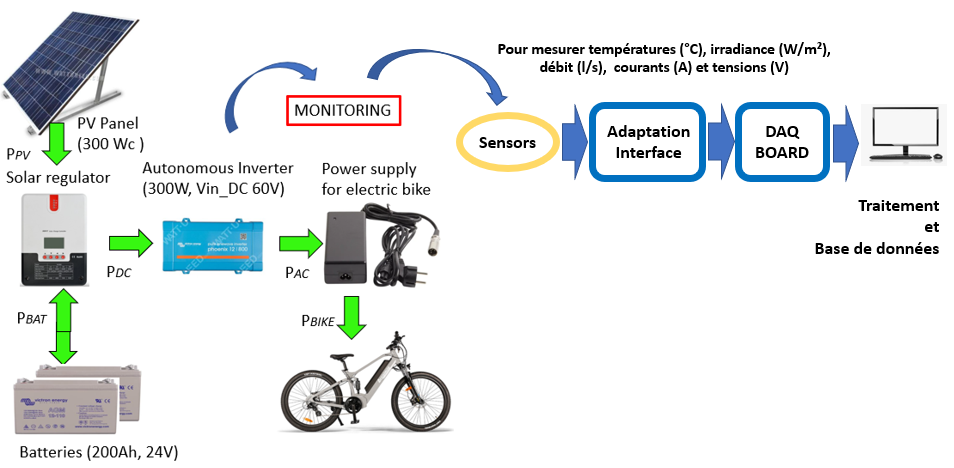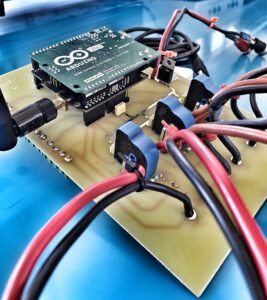Measurements of physical and electrical quantities on two photovoltaic systems

Two photovoltaic systems are currently being installed on a roof of the Paul Sabatier University in the framework of the European project Tr@nsnet. The objective of this work is to propose tools to answer scientific questions: What is the impact of shading on solar energy production? Are the installed systems (with and without cooling of the solar panels) dimensioned to charge bicycles and batteries?
Thanks to very complete international meteorological databases, coupled with photovoltaic production forecasting software (PVsyst), a daily estimate of the recoverable electrical energy will be made. This estimate will be compared to the experimental measurements. The measurements are provided by different sensors (current, voltage, irradiance and temperature), and will be recorded in a database that can be used by all.
In a second step, these measurements will be doubled with a network of low power wireless sensors and sent daily in LoRa. This approach will allow on one hand an efficient monitoring of the photovoltaic systems and on the other hand to integrate the electrical and meteorological data collected on the neOCampus servers. These data will then be made available to the scientific community (IRIT’s LoRa servers).
What is the work carried out ? Creation of a box that will integrate all the measurement equipment as well as some elements of the photovoltaic systems (regulators, protections). The picture above shows the printed circuit where the current sensors and the LoRa module are soldered. Two PCBs have been made for the two systems and they will both be integrated into the box. These printed circuits are connected to voltage acquisition boards; they are connected to a computer for the processing of the measurements on the LabVIEW software.

